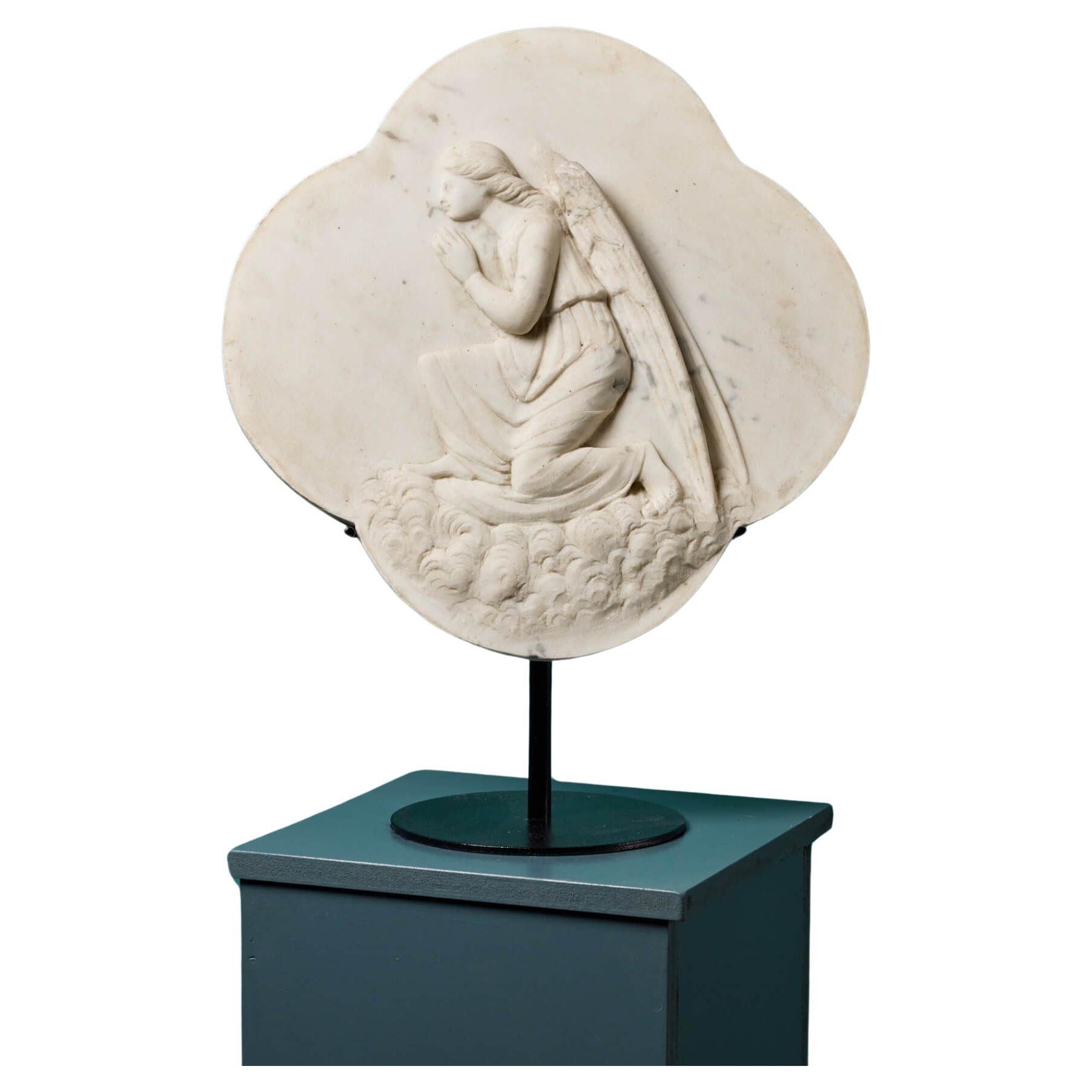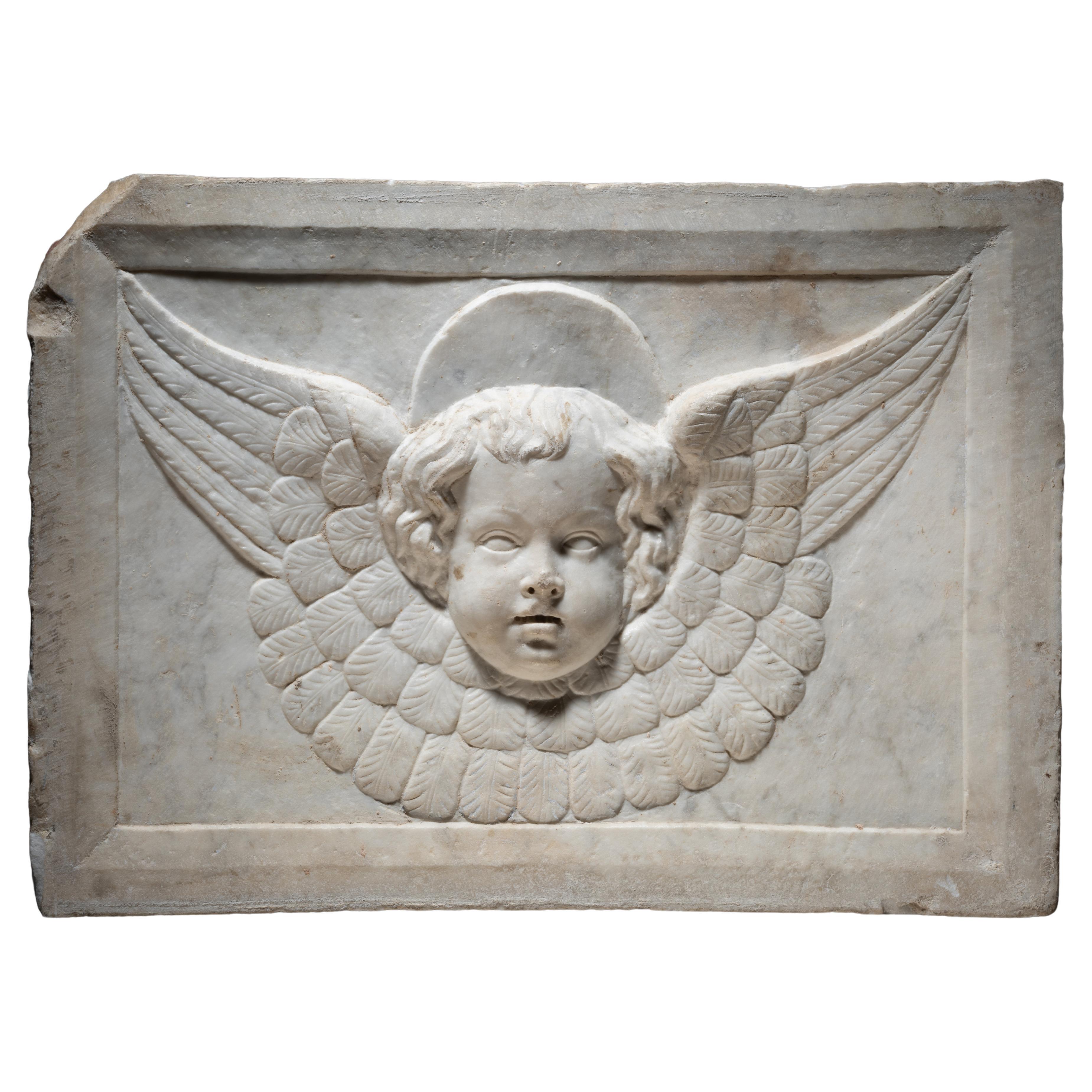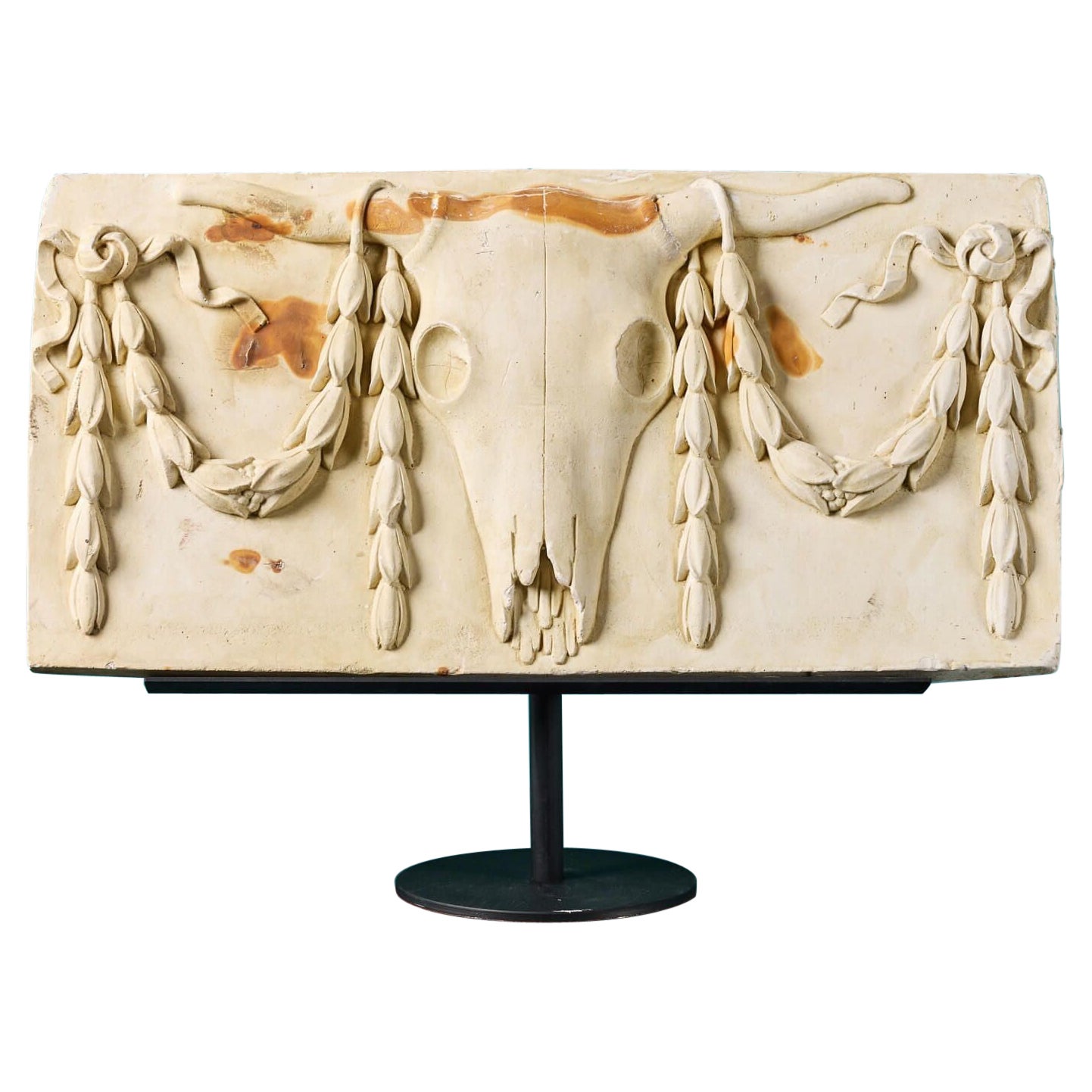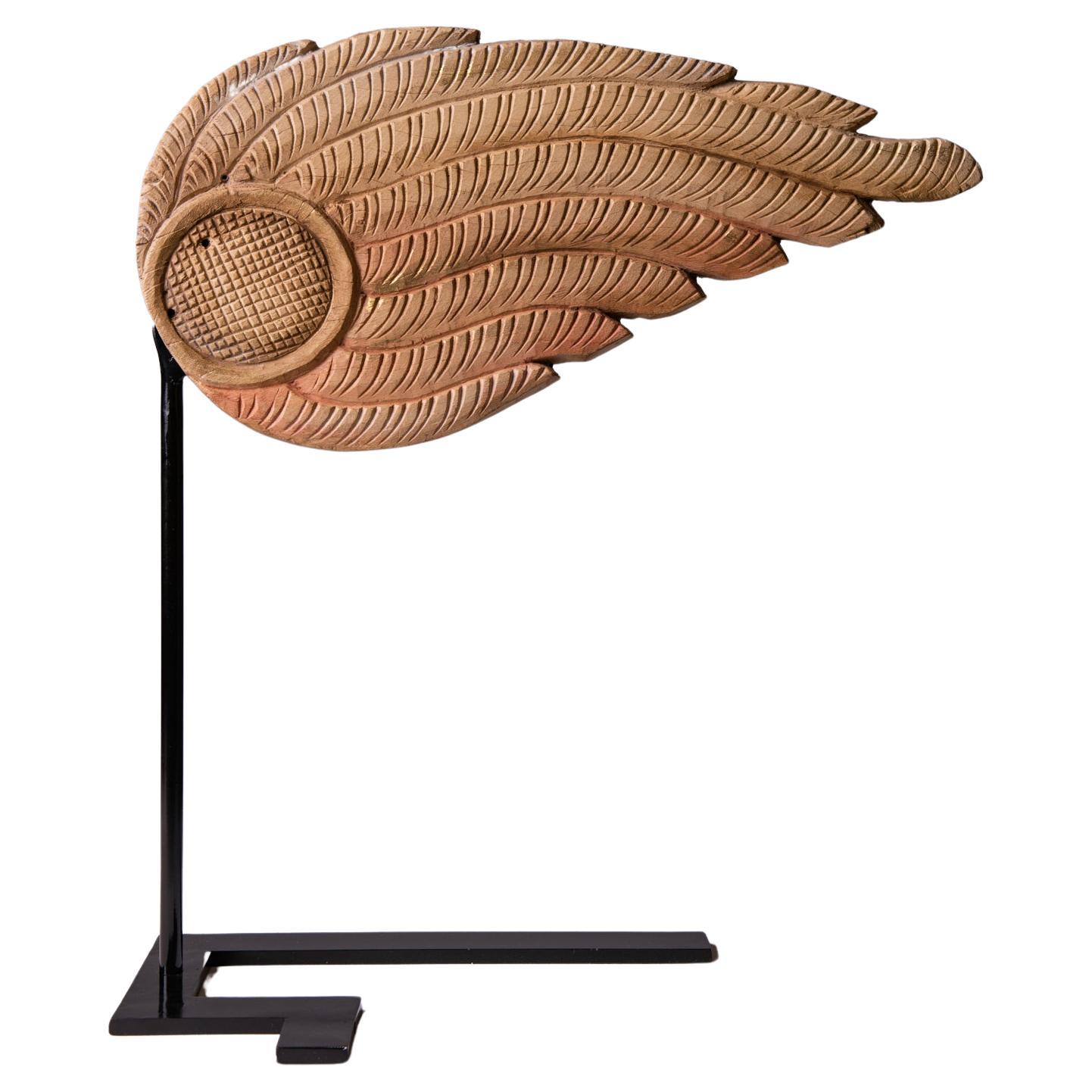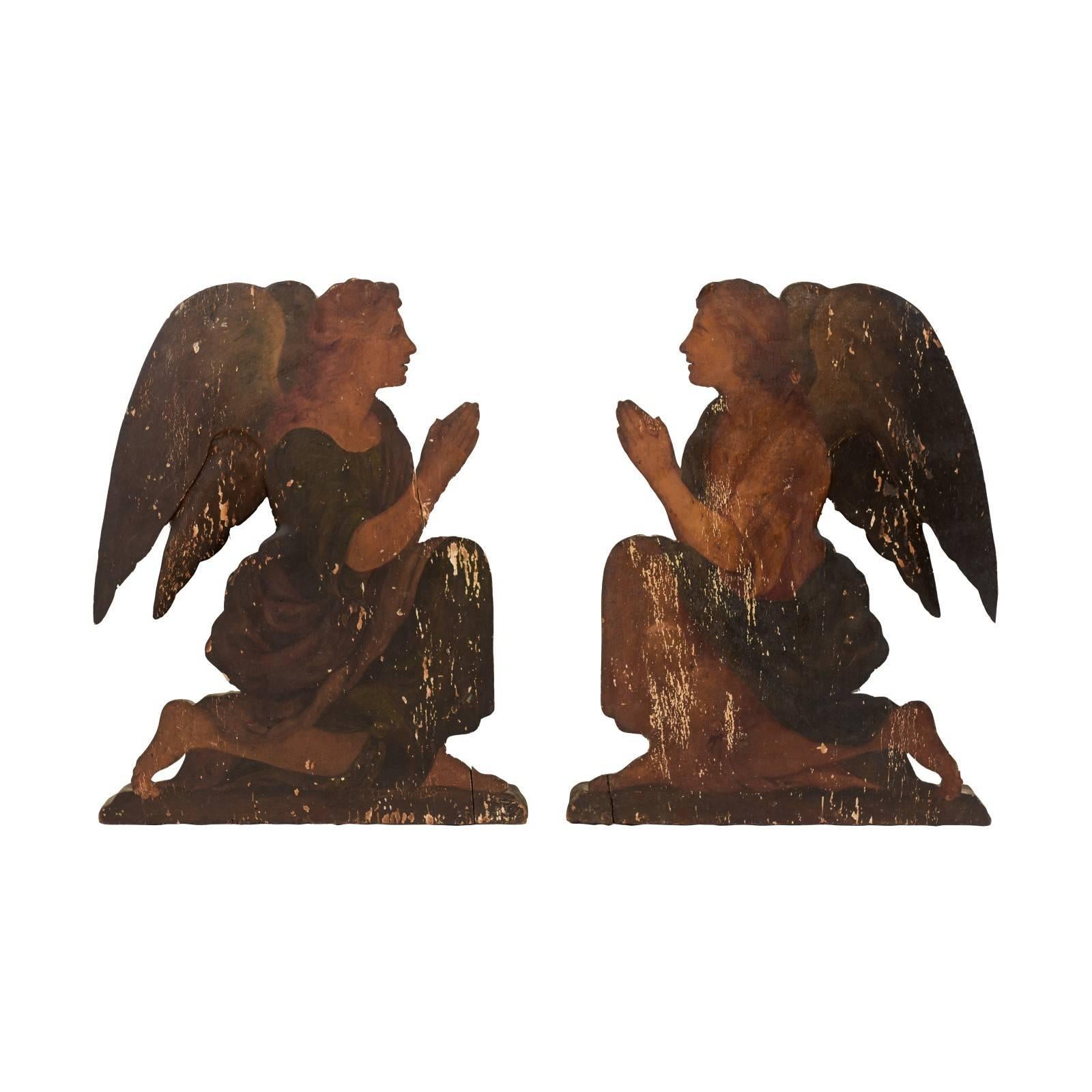Items Similar to Pair of Antique Marble Plaques Depicting Winged Angels
Want more images or videos?
Request additional images or videos from the seller
1 of 7
Pair of Antique Marble Plaques Depicting Winged Angels
About the Item
A pair of mid 19th century statuary marble plaques depicting winged angels. In ecclesiastical and Victorian styles, this elegant pair show handcarved angels swinging thuribles, a religious medium used to connect the earthly and divine realms.
At over 150 years old, these decorative plaques have kept the original handcrafted details of their eye-catching angels. They are a fragment of ecclesiastical history that would take pride of place in any home.
Additional information
Stand is 40cm x 40cm square. One plaque has a depth of 9cm, the other 13cm.
Overall dimensions are plaque only.
Each plaque comes with a custom made heavy steel stand.
- Dimensions:Height: 21.07 in (53.5 cm)Width: 16.34 in (41.5 cm)Depth: 16.34 in (41.5 cm)
- Style:Victorian (Of the Period)
- Materials and Techniques:
- Place of Origin:
- Period:
- Date of Manufacture:1850
- Condition:Good structural condition. Lightly weathered surface finish. Large chips to top of each panel. If desired the top of the panel can be reduced and remove chip if required. Each one comes with custom made heavy steel stand.
- Seller Location:Wormelow, GB
- Reference Number:
About the Seller
4.8
Platinum Seller
These expertly vetted sellers are 1stDibs' most experienced sellers and are rated highest by our customers.
Established in 2006
1stDibs seller since 2016
525 sales on 1stDibs
Typical response time: 4 hours
- ShippingRetrieving quote...Ships From: Wormelow, United Kingdom
- Return PolicyA return for this item may be initiated within 3 days of delivery.
More From This SellerView All
- Antique White Marble Angel Plaque on StandLocated in Wormelow, HerefordshireThis elegant quatrefoil shaped white marble plaque depicts a kneeling angel in high relief mounted on a bespoke steel stand. Intricately carved, the angel is left facing, kneeling on...Category
Antique Late 19th Century Abstract Sculptures
MaterialsMarble, Carrara Marble
- Antique Style Plaster Plaque Depicting Bucranium on StandLocated in Wormelow, HerefordshireThis 20th century antique style plaster plaque depicts a bucranium in striking high relief. Symbolic of Greek and Roman architecture, a bucranium is a decorative motif of an ox or bull skull among swags and garlands of foliage. This embellishment was commonly used in classical architecture and Doric temples of ancient Rome and later during a neoclassical revival in the late Georgian period. This 20th century plaster depiction is an intricate example of the bucranium, modelled in plaster in high relief and mounted on a bespoke steel stand for display...Category
20th Century English Neoclassical Mounted Objects
MaterialsSteel
- Pair of Antique Plaques Depicting Neoclassical ScenesLocated in Wormelow, HerefordshireA pair of antique plaques depicting Neoclassical scenes. Originally one plaque, this pair has been split into two over the course of time. Made from plaster, this pair have a bronze...Category
Antique Late 19th Century European Neoclassical Decorative Art
MaterialsPlaster
- Antique English Tile Depicting Duke of Cambridge Coat of ArmsLocated in Wormelow, HerefordshireA hand decorated antique English heraldic tile depicting the coat of arms of Prince George, Duke of Cambridge, dating from 1881. This porcelain tile is one of 14 similar we are selli...Category
Antique Late 19th Century English Victorian Mounted Objects
MaterialsPorcelain
- Antique English Tile Depicting Prince of Wales Coat of ArmsLocated in Wormelow, HerefordshireA hand decorated antique English heraldic tile depicting the coat of arms of Albert Edward, Prince of Wales (later Edward VII), dating from 1881. This porcelain tile is one of 14 sim...Category
Antique Late 19th Century English Victorian Mounted Objects
MaterialsPorcelain
- Set of Three Round Carrara Marble PlaquesLocated in Wormelow, HerefordshireSet of three round Carrara marble plaques. Three attractive hand carved Carrara Marble plaques each depicting a religious figure with one displaying a pa...Category
Antique Early 19th Century Mounted Objects
MaterialsMarble, Carrara Marble
You May Also Like
- Cercle of Jacopo della Pila - Marble relief depicting a winged CherubLocated in Bruxelles, BECercle of Jacopo della Pila (Lombard, in Naples 1471-1502) Marble relief depicting a winged Cherub Naples, second half of15th century 40 x 57 x 12 cm Exquisitely carved, this relief portrays a winged cherub with cascading hair and delicate features. The cherub's plump, smooth countenance, rounded cheeks, outlined lips, and finely drawn nose emanate a sense of tenderness. The quadrangular module, is adorned with a carved frame. The relief ascends gradually, transitioning from the low relief of the wings to the high relief of the head. The rectangular frame and the subtly curved form of the artwork suggest that the relief likely adorned the upper part of an arch or a vaulted chapel. The type is that of the perspective room with a coffered ceiling decorated with figures of winged cherubs, which is found in various Neapolitan chapels of the 15th century. Coffered ceilings attest to the recovery of antiquity and the search for luxury in Renaissance architecture, first in Florence, then in Rome and Naples. The majority of the numerous family chapels and tombs built during the late fifteenth century in south of Italy employ the new formal vocabulary of the Florentine Renaissance in a self-confident manner that permitted a broad spectrum of variations. The escalating admiration for the classical world, coupled with the development of perspective, significantly contributed to the Renaissance endorsement of coffered ceilings. This artistic and constructive device drew inspiration from the intricate marble patterns observed in historical landmarks such as the Arch of Titus, the Temple of Vesta in Tivoli, the Pantheon, and the Basilica of Maxentius. A distilled product of both mathematical and artistic cultures, deeply scrutinizing the ancient world, the coffered ceiling plays a vital role in the perspective construction of space with its regular and directional geometry. The motif of the coffered ceiling decorated with cherubs in relief was introduced in Naples by Francesco Laurana in the plastic decoration of the Arch of Castelnuovo. Laurana's impact on the art scene in the south of Italy was profound. The introduction of the winged cherub into the region's artistic vocabulary bridged the gap between the classical and the contemporary, creating a synthesis that resonated with both aesthetic and spiritual sensibilities. His influence extended beyond the immediate visual appeal, shaping the cultural identity of the Renaissance in southern Italy. Although the plastic decoration of the Arch of Castelnuovo cannot certainly be ascribed to a mature Renaissance style, it was precisely on this occasion that the sculptors who worked there could get to know and export throughout the Italian peninsula that type of "Florentine classicism" which, even in the 15th century Naples, was conditioned by the Burgundian culture imported into the Kingdom by Alfonso of Aragon himself, with artists called from Spain and Northern Europe. The coffered ceiling, with its geometric patterns and Laurana's winged cherubs nestled within, became a symbol of refinement and cultural sophistication. The relief sculptures, carefully integrated into the overall design, transformed the ceiling into a celestial realm, inviting viewers to contemplate the divine while immersed in the grandeur of the Renaissance space. Similar winged cherubs appears also in the Naples cathedral. Within the renowned Succorpo Chapel, a mesmerizing marble coffered ceiling adorned with cherubs epitomizes the splendor of the Neapolitan Renaissance. The interplay of light and shadow on the textured surface of the marble coffered ceiling introduces an ethereal dimension, providing an immersive visual experience for observers. The geometric precision and the repeated patterns, reminiscent of classical motifs, establish a sense of harmony and balance that has become the hallmark of the Neapolitan interpretation of Florentine Renaissance aesthetics. Although probably intended to be admired from a distance, this cherub is intricately detailed and exquisitely rendered: the face and hair are elegantly outlined and the feathers are textured through juxtaposed lines. The marble, both figurative and decorative, adheres to the principles of balance and restrained ornamentation typical of the « Florentine Classicism ». Harmonious shapes and gracefully orchestrated curves , rooted in the classical repertoire, converge to evoke a sense of ethereal beauty. The surface displays the masterful use of a chisel to intricately carve the feathers and facial features, creating an almost abstract quality. This work is a testament to a sculptor of great skill and rich figurative knowledge, seamlessly blending classical firmness in contours with a refined treatment of the marble's surface. The combination of tradition and innovation point to a stylistic idiom from Lombardy, in particular we can find some comparaisons with the works of Jacopo della Pila, sculptor of Lombard origin working in Naples in the second half of the 15th century. He is documented there between 1471 and 1502, and is a protagonist of the Aragon Renaissance in the second half of the Quattrocento, together with the other great Northern sculptor active in the kingdom, Domenico Gagini. the first commission he received dates back to August 9, 1471, when Jacopo publicly committed to sculpting the funerary monument of Archbishop Nicola Piscicelli to be placed in the Cathedral of Salerno. The last known work is an altar ordered on July 29, 1502, by the noble Jacopo Rocco for the church of San Lorenzo Maggiore in Naples. Between these two chronological extremes (1471-1502), we must place the fervent activity of the artist, who had trained in Rome, perhaps under the guidance of Paolo Romano but also engaged in dialogue with other major artists of the city, especially Isaia da Pisa. He enriched his experience in Naples, initially drawing inspiration from the works of Domenico Gagini and later from the Tuscan masterpieces of Antonio Rossellino and Benedetto da Maiano destined for the church of Santa Maria di Monteoliveto. Jacopo della Pila's artistic personality is thus based on a complex interplay of influences, contributing to the definition of a highly personal style. Close comparaison can be made between our cherub and the winged angels reliefs...Category
Antique 15th Century and Earlier Italian Renaissance Figurative Sculptures
MaterialsMarble
- Large Angel Wooden WingLocated in Alessandria, PiemonteAn Indian angel lost a wing... and I picked it up for Christmas time...Category
Mid-20th Century Indian Anglo-Indian Figurative Sculptures
MaterialsTeak
- Midcentury Angel Wing SculptureLocated in West Palm Beach, FLMidcentury Angel Wing Sculpture, Beautifully cast and finished, pierced acid washed- verdigris patinated Iron, raised on an 11" diameter base. Uns...Category
Vintage 1980s Figurative Sculptures
MaterialsIron
- Pair of Lovely Italian 19th Century Painted Wood Angel PlaquesLocated in Atlanta, GAA pair of Italian 19th century painted wood angel plaques. This pair of antique Italian plaques, perhaps originally used to decorate a chapel, feature a ...Category
Antique 19th Century Italian Decorative Art
MaterialsWood
- Early 1900 Fine Hand Crafted Marble Wall Plaque with Sculpture of Grieving AngelLocated in Lisse, NLHand-carved kneeling angel in relief. Marked/Signed picture 4. This mourning angel by a grave is entirely hand-carved out of marble. This early 20th century Christian work of art ca...Category
Early 20th Century Italian Art Deco Wall-mounted Sculptures
MaterialsCarrara Marble
- Four Antique Bronze Plaques Depicting Water-Nymphs, by Ferdinand BarbedienneBy Ferdinand BarbedienneLocated in London, GBFour antique bronze plaques depicting water-nymphs, by Ferdinand Barbedienne French, 19th century. Measures: Height 47cm, width 12cm, depth 2.5cm Finely cast in relief from patinated bronze with parcel gilt patina, these French 19th Century panels each depict a Classical female water-nymph. The relief structure and design is after four panels from the important marble fountain from the Renaissance period in Paris called the Fontaine des Innocents. This was created by the French sculptor Jean Goujon...Category
Antique 19th Century French Renaissance Figurative Sculptures
MaterialsBronze
Recently Viewed
View AllMore Ways To Browse
Decorative Plaques
Marble Eye
Pair Plaques
Antique Marble Plaque
Pair Angels
Pair Of Angels
19th Century Marble Plaque
Angel Sculpture Antique
Angel Sculptures
Ecclesiastical Furniture
Winged Angel Furniture
Angel Marble
Angel Victorian
Religious Plaques
Pair Of Antique Fragments
Marble Plaques Pair
Angel Wing Sculpture
Antique Marble Angel
